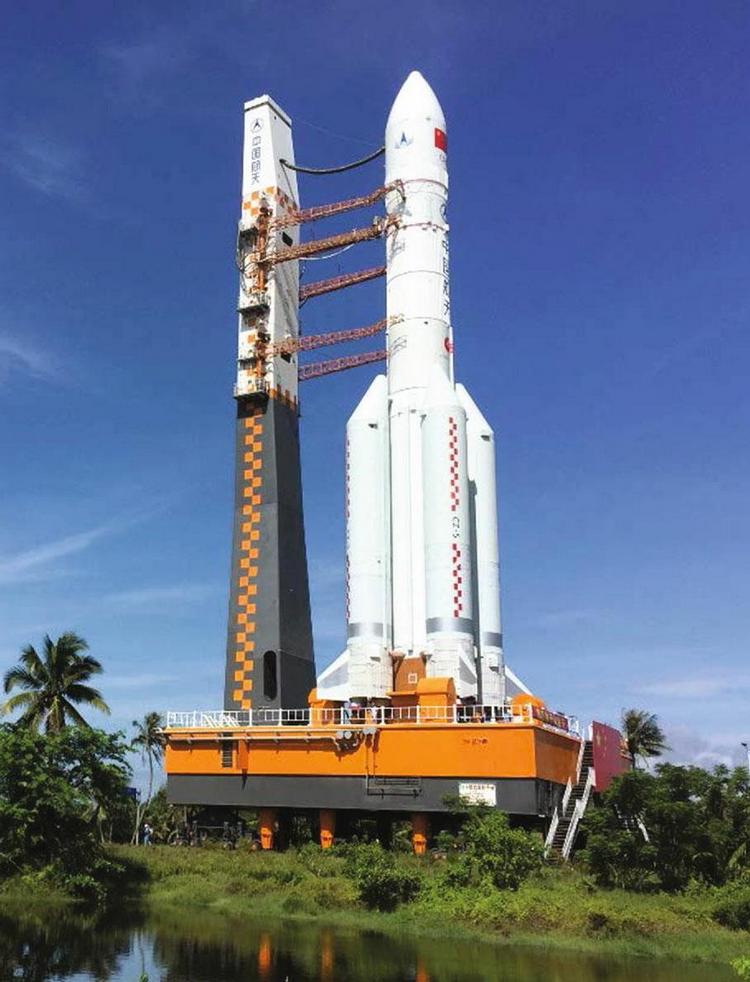
Long March 5/YZ-2
ActiveChina Aerospace Science and Technology Corporation (CASC)
Nov. 3, 2016
Description
Specifications
-
Length
― -
Diameter
― -
Fairing Diameter
― -
Launch Mass
― -
Thrust
―
Family
-
Name
Long March 5/YZ-2 -
Family
― -
Variant
YZ-2 -
Alias
― -
Full Name
Long March 5/YZ-2
Payload Capacity
-
Launch Cost
― -
Low Earth Orbit
― -
Geostationary Transfer
Orbit
― -
Direct Geostationary
― -
Sun-Synchronous Capacity
―
China Aerospace Science and Technology Corporation
Government
Chairman & President: Lei Fanpei
CASC 1999The China Aerospace Science and Technology Corporation (CASC) is the main contractor for the Chinese space program. It is state-owned and has a number of subordinate entities which design, develop and manufacture a range of spacecraft, launch vehicles, strategic and tactical missile systems, and ground equipment. It was officially established in July 1999 as part of a Chinese government reform drive, having previously been one part of the former China Aerospace Corporation. Various incarnations of the program date back to 1956.
Long March 5 / YZ-2 | Shijian 18
China Aerospace Science and Technology Corporation | ChinaWenchang Space Launch Site, People's Republic of China
July 2, 2017, 11:23 a.m.
Status: Launch Failure
Mission:
Shijian 18 is a Chinese experimental geostationary satellite based on the new DFH-5 Bus. Reportedly the transmission capacity of the satellite is double that of current Chinese communications satellites, allowing more television channels and clearer programs to be transmitted. The new satellite will also improve internet connectivity and accessibility as well as reduce users' costs.
Geostationary Transfer OrbitLong March 5 / YZ-2 | Shijian 17
China Aerospace Science and Technology Corporation | ChinaWenchang Space Launch Site, People's Republic of China
Nov. 3, 2016, 12:43 p.m.
Status: Launch Successful
Mission:
This will be the maiden flight of the Long March 5, which is China's next-generation heavy-lift space launch system, comparable in performance to the European Ariane 5 and the U.S. Delta IV Heavy. The rocket is powered by RP-1 and Hydrogen, and will be able to place 25 tonnes into low earth orbit. It is carrying Shijian-17, an experimental satellite, reportedly tasked with testing ion propulsion systems for future space station keeping uses.
Geostationary OrbitLong March 3B/E
Fengyun-4C
Launch Complex 2 (LC-2) - Xichang Satellite Launch Center, People's Republic of ChinaChina's geostationary meteorological satellite program FY-4 (Feng Yun 4) is the second generation of chinese geostationary meteorological satellites.
Long March 8A
SatNet LEO Group 17
Commercial LC-1 - Wenchang Space Launch Site, People's Republic of ChinaA batch of 9 Low Earth Orbit communication satellites for the Chinese state owned SatNet constellation operated by the China Satellite Network Group.…
Soyuz 2.1a
Obzor-R No.1
43/4 (43R) - Plesetsk Cosmodrome, Russian FederationNote: Assignment of payloads to this launch is uncertain. The Russian Obzor-R satellite is a planned X-band radar earth observation satellite desi…
LVM-3 (GSLV Mk III)
BlueBird Block 2 #1
Satish Dhawan Space Centre Second Launch Pad - Satish Dhawan Space Centre, IndiaAST SpaceMobile’s Block 2 BlueBird satellites are designed to deliver up to 10 times the bandwidth capacity of the BlueBird Block 1 satellites, requi…
Long March 12A
Demo Flight
Long March 12A Pad - Jiuquan Satellite Launch Center, People's Republic of ChinaFirst test launch of CASC/SAST’s Long March 12A rocket, with a dummy payload. The rocket’s 1st stage attempted to land on a landing pad about 300 km …

